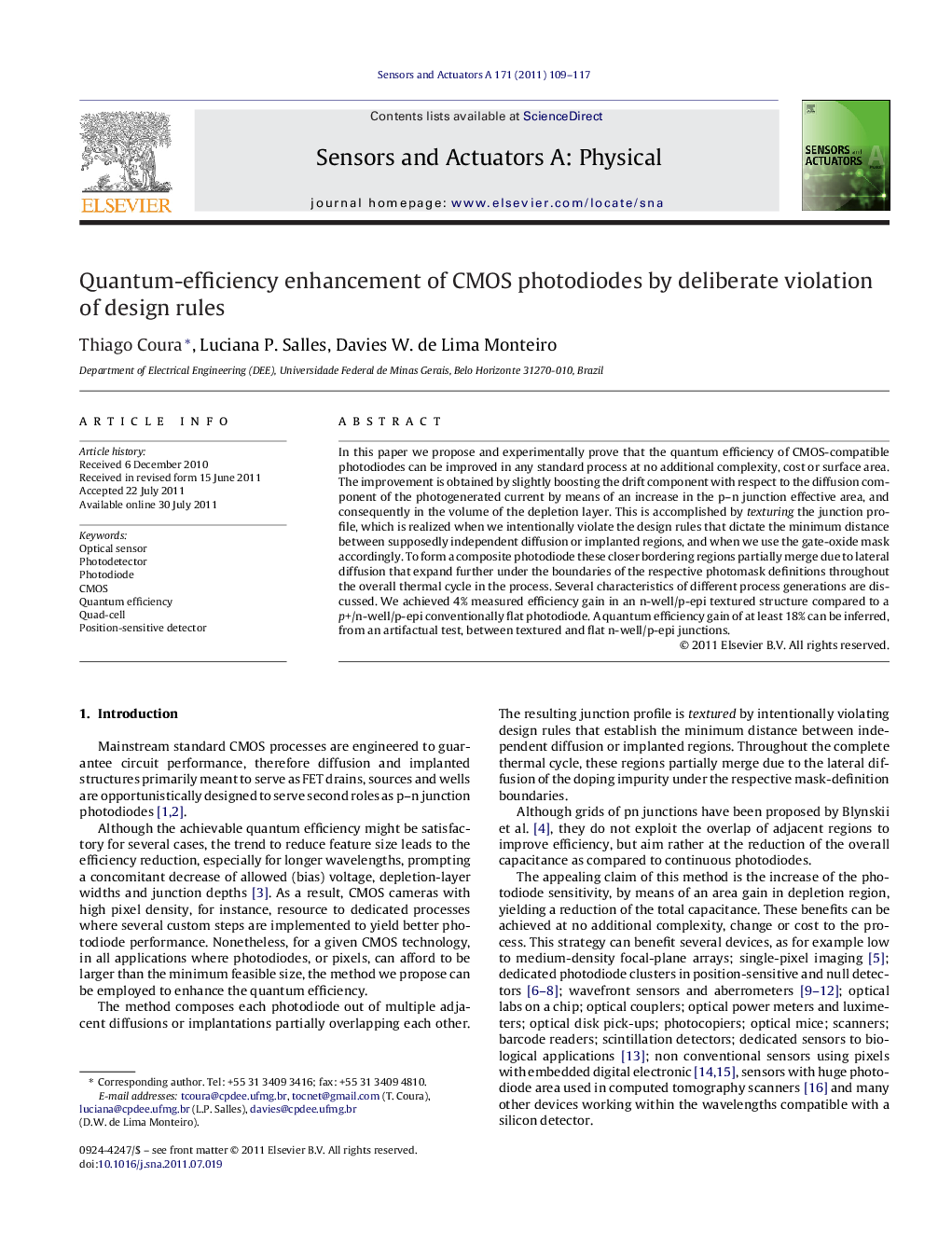| Article ID | Journal | Published Year | Pages | File Type |
|---|---|---|---|---|
| 737936 | Sensors and Actuators A: Physical | 2011 | 9 Pages |
In this paper we propose and experimentally prove that the quantum efficiency of CMOS-compatible photodiodes can be improved in any standard process at no additional complexity, cost or surface area. The improvement is obtained by slightly boosting the drift component with respect to the diffusion component of the photogenerated current by means of an increase in the p–n junction effective area, and consequently in the volume of the depletion layer. This is accomplished by texturing the junction profile, which is realized when we intentionally violate the design rules that dictate the minimum distance between supposedly independent diffusion or implanted regions, and when we use the gate-oxide mask accordingly. To form a composite photodiode these closer bordering regions partially merge due to lateral diffusion that expand further under the boundaries of the respective photomask definitions throughout the overall thermal cycle in the process. Several characteristics of different process generations are discussed. We achieved 4% measured efficiency gain in an n-well/p-epi textured structure compared to a p+/n-well/p-epi conventionally flat photodiode. A quantum efficiency gain of at least 18% can be inferred, from an artifactual test, between textured and flat n-well/p-epi junctions.
